Superorder Neoaves Infraorder Passerida Scientific name Phylloscopus trochiloides Order Passerine | Infraclass Neognathae Suborder Passeri Superfamily Sylvioidea Phylum Chordata Rank Species Subclass Modern birds | |
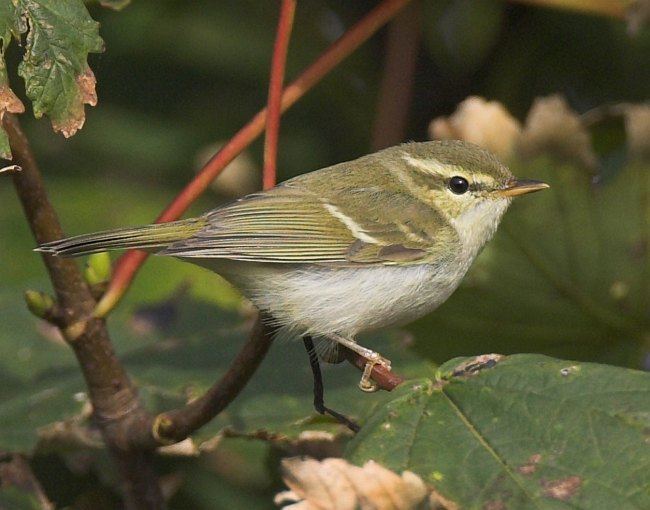 | ||
Similar Leaf warbler, Blyth's reed warbler, Bird, Booted warbler, Arctic warbler | ||
Greenish warbler
The greenish warbler (Phylloscopus trochiloides) is a widespread leaf warbler with a breeding range in northeastern Europe and temperate to subtropical continental Asia. This warbler is strongly migratory and winters in India. It is not uncommon as a spring or early autumn vagrant in Western Europe and is annually seen in Great Britain. In Central Europe large numbers of vagrant birds are encountered in some years; some of these may stay to breed, as a handful of pairs does each year in Germany.
Contents
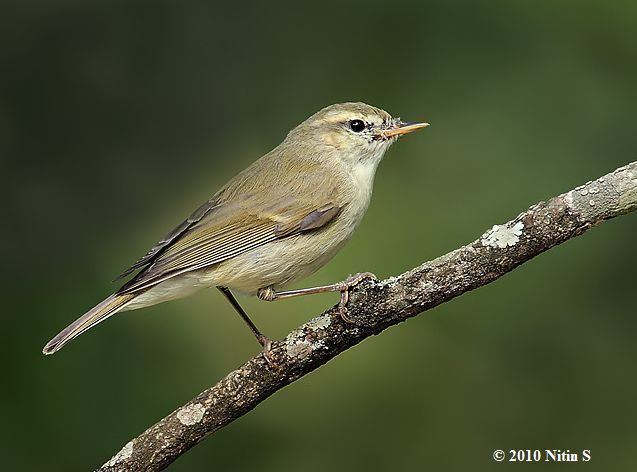
Like all leaf warblers, it was formerly placed in the "Old World warbler" assemblage, but now belongs to the new leaf-warbler family Phylloscopidae. The genus name Phylloscopus is from Ancient Greek phullon, "leaf", and skopos, "seeker" (from skopeo, "to watch"). The specific trochiloides is from Ancient Greek trokhalos, "bowed", and -oides "resembling", from the similarity to the willow warbler, P. trochilus.
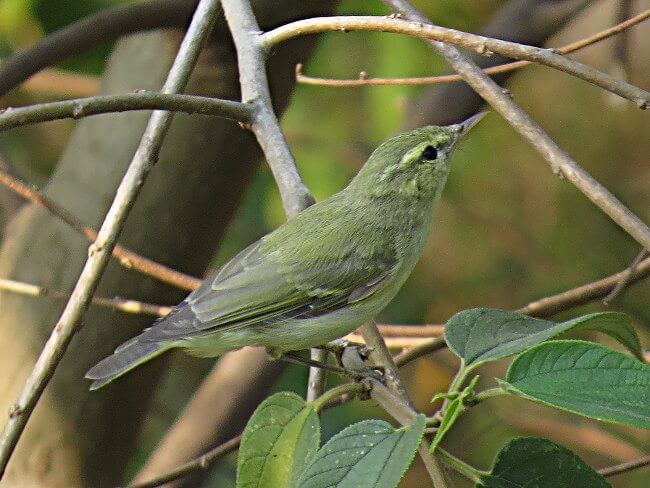
Greenish warbler bathing
Description and ecology
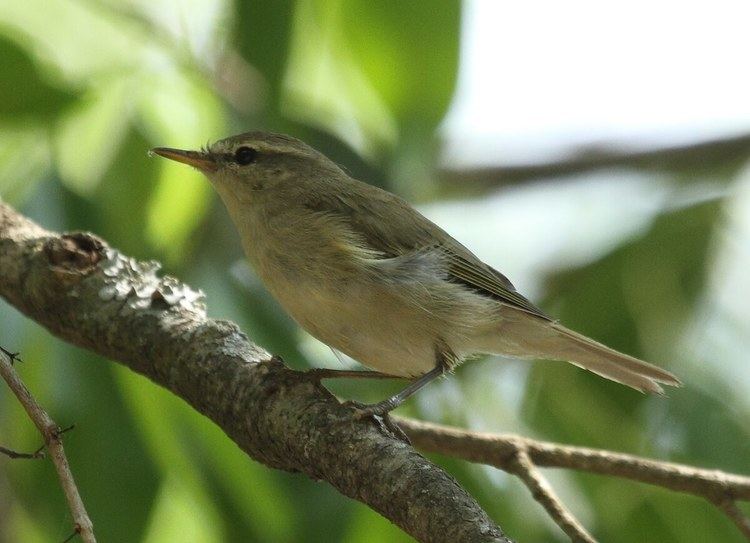
This is a typical leaf warbler in appearance, grayish-green above and off-white below. The single wing bar found in the southern and western populations distinguishes them from most similar species (except Arctic warbler P. borealis). It is slightly smaller than that species and has a thinner bill, without a dark tip to the lower mandible. A latitude-based analysis of wintering birds indicated that more northerly P. trochiloides are smaller, i.e. this species does not seem to follow Bergmann's rule.
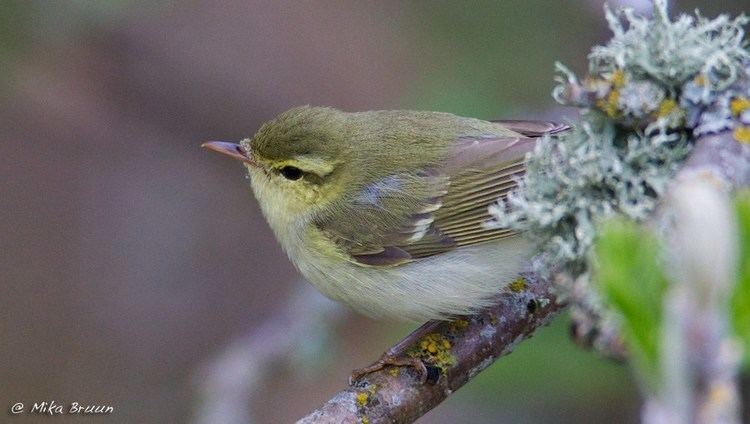
Its song is a high jerky trill, in some populations containing a sequence of down- and more rarely up slurred notes.
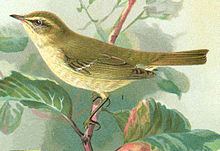
It breeds in lowland deciduous or mixed forest; non-breeding birds in the warmer parts of its range may move to montane habitat in summer. Individuals from southeast of the Himalayas are for example quite often seen in Bhutan during the hot months, typically in humid Bhutan Fir (Abies densa) forest up to about 3,800 meters ASL or more, but they do not breed there and return again to the adjacent subtropical lowlands in winter.
The nest is on the ground in low shrub. Like its relatives, this small passerine is insectivorous.
Subspecies and evolution
It has a number of subspecies, of which P. t . viridianus is the most familiar in Europe. As it seems, it is a ring species, with populations diverging east- and westwards of the Tibetan Plateau, later meeting on the northern side. Their relationships are therefore fairly confusing:
The groups' origin lies probably in the Himalayan region, where trochiloides is found. This taxon is close to the parapatric obscuratus, and to plumbeitarsus which is geographically separated from obscuratus; they all can (and in the case of the former two do naturally) hybridize. P. t. plumbeitarsus is often split as distinct species, as it does not hybridize with viridianus in the narrow zone in the western Sayan Mountains where their ranges overlap.
But phylogenetically, the western taxa are even more distinct. However, there is some gene flow between trochiloides and viridianus also, with their hybrids being especially common in Baltistan; they were once considered another subspecies ludlowi. The green warbler P. nitidus, now by many considered a distinct species, is a mountain isolate that diverged from ancestral viridianus.
Song structure differs mainly between greenish warbler and two-barred warbler, which was formerly considered conspecific. The former has a fairly uniform, long, and warbling song. Around the Himalayas, song structure is similar, but songs are generally shorter. Two-barred warbler, on the other hand, has a long song that can be clearly divided into a warbling part, followed by series of up- and downslurred notes. The songs of obscuratus, and, interestingly, "ludlowi", are short, but contain the downslur elements too; in the latter, they uniquely appear at the start of the song.
